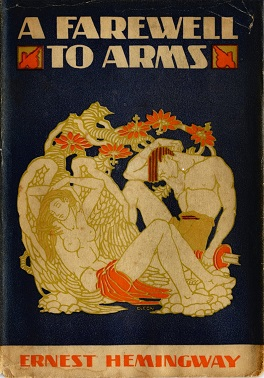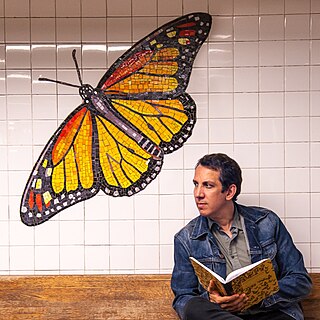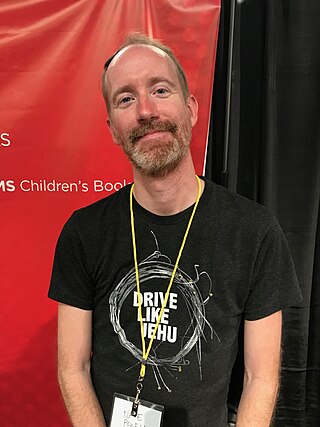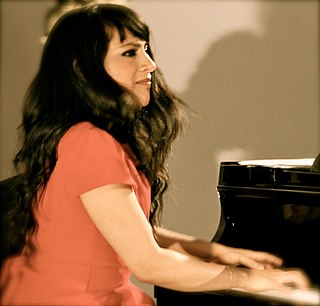
A Farewell to Arms is a novel by American writer Ernest Hemingway, set during the Italian campaign of World War I. First published in 1929, it is a first-person account of an American, Frederic Henry, serving as a lieutenant in the ambulance corps of the Italian Army. The novel describes a love affair between the American expatriate and an English nurse, Catherine Barkley.
A graphic novel is a long-form work of sequential art. The term graphic novel is often applied broadly, including fiction, non-fiction, and anthologized work, though this practice is highly contested by comics scholars and industry professionals. It is, at least in the United States, typically distinct from the term comic book, which is generally used for comics periodicals and trade paperbacks.

Photojournalism is journalism that uses images to tell a news story. It usually only refers to still images, but can also refer to video used in broadcast journalism. Photojournalism is distinguished from other close branches of photography by having a rigid ethical framework which demands an honest and impartial approach that tells a story in strictly journalistic terms. Photojournalists contribute to the news media, and help communities connect with one other. They must be well-informed and knowledgeable, and are able to deliver news in a creative manner that is both informative and entertaining.
The Prix de la critique is a prize awarded by the Association des Critiques et des journalistes de Bande Dessinée to the best comic album released for a year in France. Previously, from 1984 to 2003, it was called Prix Bloody Mary and awarded at the Angoulême International Comics Festival. Concerned at first with albums of the Franco-Belgian comics school it was eventually interested in works coming from the comic book tradition of more distant lands.

Peter Kuper is an American alternative comics artist and illustrator, best known for his autobiographical, political, and social observations.
Hervé Guibert was a French writer and photographer. The author of numerous novels and autobiographical studies, he played a considerable role in changing French public attitudes to HIV/AIDS. He was a close friend and lover of Michel Foucault.

First Second Books is an American publisher of graphic novels. An imprint of Roaring Brook Press, part of Holtzbrinck Publishers, First Second publishes fiction, biographies, personal memoirs, history, visual essays, and comics journalism. It also publishes graphic non-fiction for young readers, including the Science Comics and History Comics collections, and for adults, including the World Citizen Comics, a line of civics graphic books, and biographical works such as The Accidental Czar.

Scott David Westerfeld is an American writer of young adult fiction, best known as the author of the Uglies and the Leviathan series.

Nathan Lee Powell is an American graphic novelist and musician. His 2008 graphic novel Swallow Me Whole won an Ignatz Award and Eisner Award for Best Original Graphic Novel. He illustrated the March trilogy, an autobiographical series written by U.S. Congressman John Lewis and Andrew Aydin, which received the 2016 National Book Award, making Powell the first cartoonist to receive the award.
Didier Comès was a Belgian comics artist, best known for his graphic novels published in the magazine (À Suivre).

A.D.: New Orleans After the Deluge is a non-fiction graphic novel by cartoonist Josh Neufeld. Originally published as a webcomic, A.D. tells the stories of a handful of real-life New Orleans residents and their experiences during and after Hurricane Katrina. The graphic novel was a New York Times best-seller and was nominated for an Eisner Award and a Harvey Award in 2010. In addition, A.D. was selected for inclusion in The Best American Comics 2010.

Shani Diluka is a Monegasque pianist of Sri Lankan descent. She was among those to benefit from a programme initiated by Princess Grace of Monaco, which allowed children to receive music lessons integrated into their schooling. She received the first prize in the Académie de Musique. She subsequently studied with Odile Poisson, a pupil of Pierre Sancan. Enrolled in the Conservatoire de Paris in 1997, she studied with Georges Pludermacher and François-Frédéric Guy and later with Marie-Françoise Bucquet, Nicholas Angelich and Bruno Rigutto.

Didier Lefèvre (1957–2007) was a French photojournalist. His photos have appeared in many French magazines, including L'Express and Éditions Ouest France. He was best known for co-authoring with Emmanuel Guibert the book The Photographer, which told the story of his travels with a Médecins Sans Frontières mission during the Soviet–Afghan War.
Adriana Hunter is a British translator of French literature. She is known for translating over 60 French novels, such as Fear and Trembling by Amélie Nothomb or The Girl Who Played Go by Shan Sa. She has been short-listed for the Independent Foreign Fiction Prize twice. In 2011 she won the Scott Moncrieff Prize for her translation of Véronique Olmi's Beside the Sea. In 2013, she won the 27th Annual Translation Prize founded by the French-American Foundation and the Florence Gould Foundation for her translation of Electrico W by Hervé Le Tellier (2013). She is also a contributor to Words Without Borders. She lives in Kent, England. In 2017, she became the English translator for new comic albums in the Asterix series.
L'Étoile du soldat is a French film by the director Christophe de Ponfilly, who made several movies and documentaries in Afghanistan. The film was released after his suicide in 2006.
The Globes de Cristal Awards is a set of awards bestowed by members of the French Press Association recognizing excellence in home art and culture. The annual formal ceremony and dinner at which the awards are presented happens each February.

The Arrival is a wordless graphic novel written by Shaun Tan and published by Hodder Children's Books in 2006. The book is 128 pages long and divided into six chapters; it is composed of small, medium, and large panels, and often features pages of full artwork. It features an immigrant's life in an imaginary world that sometimes vaguely resembles our own. Without the use of dialogue or text, Shaun Tan portrays the experience of a father emigrating to a new land. Tan differentiates The Arrival from children's picture books, explaining that there's more emphasis on continuity in texts with multiple frames and panels, and that a graphic novel text like his more closely resembles a film making process. Shaun Tan has said he wanted his book to build a kind of empathy in readers: "In Australia, people don't stop to imagine what it's like for some of these refugees. They just see them as a problem once they're here, without thinking about the bigger picture. I don't expect the book to change anybody's opinion about things, but if it at least makes them pause to think, I'll feel as if I've succeeded in something."
The 2nd Globes de Cristal Award ceremony honoured the best French movies, actors, actresses, plays, concerts, novels, singers, TV series, exhibitions and fashion designers of 2006 and was launched by the French television channel Paris Première. 19 journalists selected a list of five nominees in each of 12 award categories; 3,000 journalists then voted to determine the winners. The ceremony took place on 5 February 2007 at Le Lido in Paris and was broadcast live on the channel Paris Première. The ceremony was chaired by Pierre Lescure and hosted by André Manoukian and Élisabeth Quin.
The France Info Prize for news and reporting comics is a comic book prize awarded annually by the French public radio station France Info. The jury of the station's journalists chooses from a selection of about ten albums.

Emmanuel Guibert is a French comics artist and writer. For his work, he has been awarded the French Ordre des Arts et des Lettres and the Grand Prix de la ville d'Angoulême.











